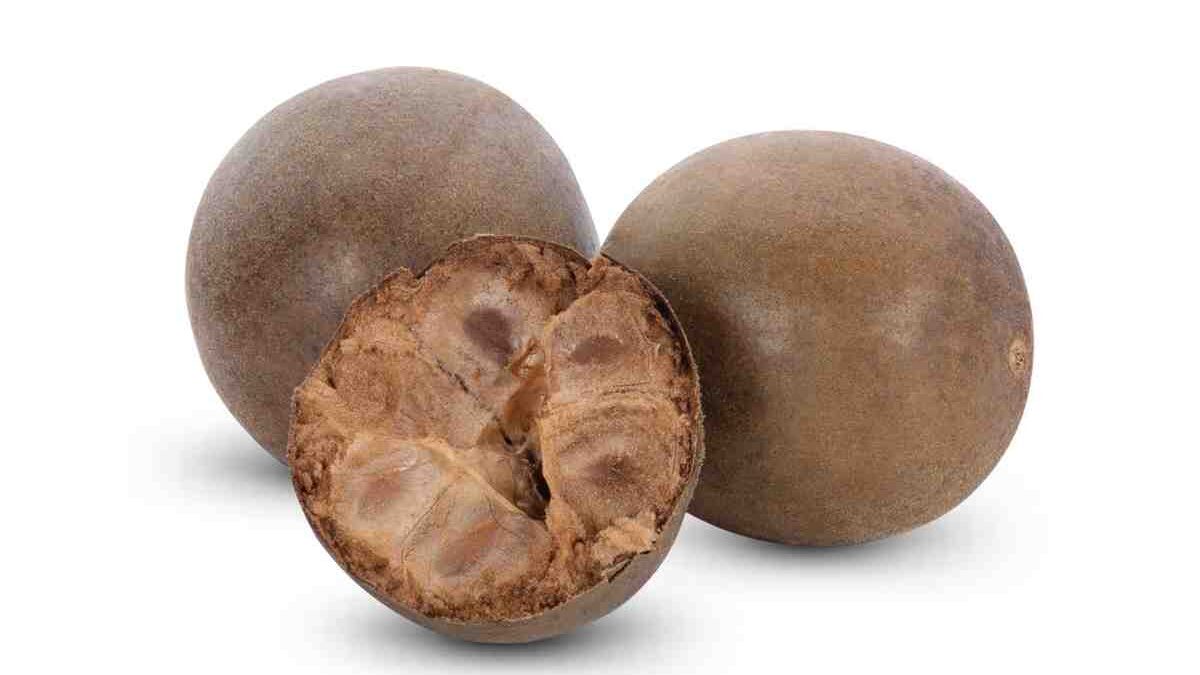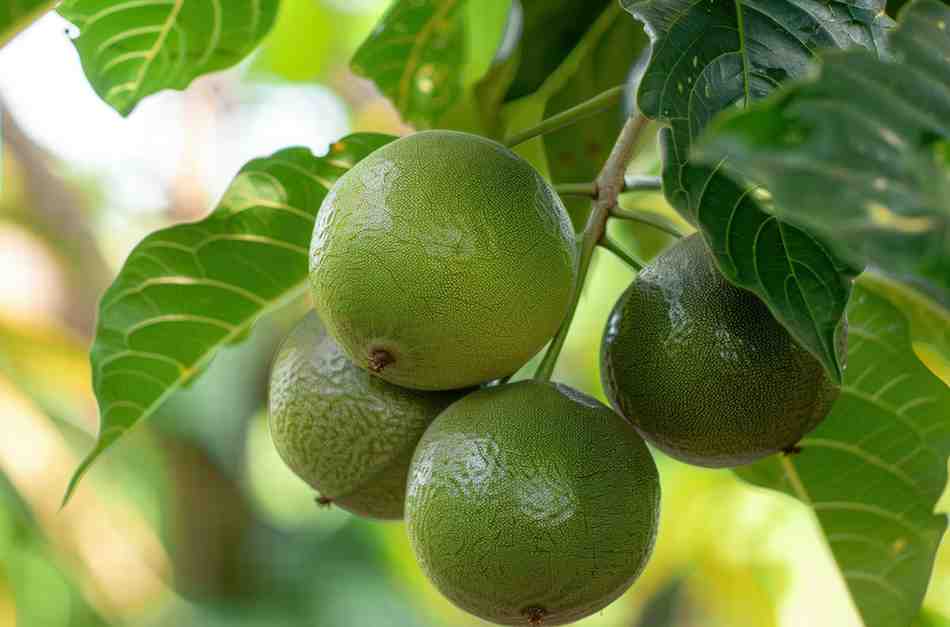Monk fruit, also known as luo han guo, has gained popularity as a natural sweetener. Originating from Southeast Asia, particularly China, this fruit has been used for centuries in traditional medicine. In today’s health-conscious world, monk fruit stands out for offering sweetness without calories. Many people choose it as a healthier alternative to sugar. In this article, we will explore monk fruit’s background, sweetening properties, and the health benefits it offers.
What is Monk Fruit?
Monk fruit is a small, green gourd grown primarily in Southeast Asia. It has been used in Chinese medicine for centuries, known for its natural sweetness and health benefits. Today, monk fruit is commonly used as a natural sweetener because it contains compounds that are significantly sweeter than sugar.
Origins and History
Buddhist monks first cultivated monk fruit over 1,000 years ago, using it in herbal remedies to treat sore throats and digestive issues. Its natural sweetness made it an ideal sweetener in teas and foods. This long-standing use in traditional medicine has carried over into modern times, where its sweetening properties are appreciated for their health benefits.
Cultivation Process
Monk fruit grows in humid, tropical climates. After harvesting, the fruit is either dried or processed to extract its sweet components, which are used to create monk fruit sweeteners. To preserve its delicate nature, farmers pick the fruit by hand.
- Grown mainly in China and Thailand.
- Perishable nature requires careful handling post-harvest.
- Modern extraction techniques allow producers to retain its sweet compounds without losing the fruit’s natural benefits.
Monk Fruit Sweeteners and Their Composition
Monk fruit sweeteners come from compounds within the fruit called mogrosides. These natural antioxidants give monk fruit its intense sweetness, which can be up to 250 times sweeter than sugar. Importantly, monk fruit sweeteners don’t add calories or affect blood sugar levels, making them an ideal choice for diabetics and those following low-carb diets.

What are Mogrosides?
Mogrosides are the compounds in monk fruit responsible for its sweetness. Mogroside V is the most potent of these compounds, contributing to monk fruit’s remarkable ability to sweeten food without calories.
- Mogrosides are antioxidants.
- They are 250 times sweeter than sugar.
- Mogrosides do not cause a rise in blood sugar, making monk fruit suitable for diabetics.
Monk Fruit vs. Other Sweeteners
Monk fruit offers several advantages over other popular sweeteners:
- Stevia: Monk fruit has a cleaner, less bitter aftertaste than stevia, which can be off-putting to some.
- Honey: Although natural, honey contains sugar and calories, which can spike blood sugar levels.
- Agave: Marketed as a healthy alternative, agave is high in fructose and may not be the best option for diabetics.
Health Benefits of Monk Fruit
Beyond its ability to sweeten without adding calories, monk fruit offers a variety of health benefits. Its antioxidant and anti-inflammatory properties make it a standout choice for those looking for a healthy alternative to sugar.
Antioxidant Power
Mogrosides in monk fruit function as antioxidants, which help protect the body from damage caused by free radicals. These antioxidants play a role in reducing oxidative stress, which supports overall health.
- Antioxidants protect against aging and chronic diseases.
- Regular consumption of monk fruit can help boost the body’s defenses against oxidative damage.
Calorie-Free and Ideal for Weight Management
Monk fruit sweeteners are calorie-free, making them an excellent choice for individuals looking to lose or maintain weight. Unlike sugar, monk fruit sweeteners add no calories to the diet.
- Monk fruit doesn’t cause blood sugar spikes.
- It is ideal for low-carb and ketogenic diets, providing sweetness without adding carbs.
Anti-Inflammatory Effects
Preliminary research suggests that monk fruit has anti-inflammatory properties, which could offer additional health benefits.
- Reduced inflammation can improve immune function.
- Lower levels of inflammation may help prevent chronic conditions such as heart disease and arthritis.
Monk Fruit for Diabetes Management
Monk fruit is especially beneficial for individuals managing diabetes. Unlike sugar and other high-glycemic sweeteners, monk fruit does not cause spikes in blood sugar levels.
How Monk Fruit Helps Control Blood Sugar
Monk fruit has a glycemic index of zero, meaning it doesn’t affect blood sugar. Studies suggest that mogrosides may also improve insulin sensitivity, further aiding those with diabetes in managing their condition.
- Monk fruit sweeteners prevent sudden changes in blood sugar.
- Diabetics can safely incorporate monk fruit into their daily diets without worrying about glucose spikes.
Monk Fruit Compared to Artificial Sweeteners
While artificial sweeteners like aspartame or sucralose are widely used, they come with potential health concerns. Monk fruit, as a natural sweetener, provides a safer alternative without synthetic ingredients or chemicals.
- Monk fruit is free from chemicals and additives found in artificial sweeteners.
- It doesn’t trigger insulin responses, unlike some artificial sweeteners.

Applications of Monk Fruit in Cooking and Baking
Monk fruit is an excellent sugar substitute for various culinary applications. It brings sweetness to dishes without adding calories, making it perfect for health-conscious individuals. Whether you’re baking, cooking, or mixing drinks, monk fruit offers a clean, sweet flavor without the negative health effects of sugar.
How to Use Monk Fruit in Recipes
Monk fruit works well in many recipes as a sugar replacement. Its intense sweetness and neutral taste make it a versatile option for both sweet and savory dishes.
- Baking: Monk fruit sweeteners can replace sugar in cakes, cookies, and muffins. A 1:1 substitution generally works, but some adjustments to texture may be needed since sugar adds moisture and structure.
- Beverages: Monk fruit dissolves easily in hot and cold drinks, making it a great addition to coffee, tea, lemonade, and smoothies.
- Sauces and Dressings: Monk fruit adds a touch of sweetness to salad dressings, marinades, and sauces, balancing flavors without overwhelming the dish.
Since monk fruit is much sweeter than sugar, it’s important to adjust the quantity based on the form you are using. Experimenting with amounts in different recipes helps to find the perfect balance for your taste.
Monk Fruit in Commercial Food Products
Monk fruit sweeteners are now common in many commercial products, such as sugar-free soft drinks, energy bars, low-calorie ice creams, and snacks. These products cater to people who want to reduce sugar intake while still enjoying sweetness. Monk fruit is particularly popular in items designed for diabetics or those following low-carb diets.
Best Monk Fruit Brands
Several brands offer monk fruit sweeteners, each with its unique blends and purities. Some brands combine monk fruit with other sweeteners like erythritol to enhance texture and ease of use. When choosing a monk fruit product, consider its purity and any added ingredients to ensure it fits your dietary needs.
Popular Monk Fruit Brands
- Lakanto: Known for its monk fruit and erythritol blend, Lakanto is popular for baking and sweetening beverages.
- BetterBody Foods: This brand offers pure monk fruit sweeteners with no added ingredients, ideal for those looking for a natural, sugar-free option.
- NOW Foods: NOW Foods provides both liquid and powdered monk fruit, making it versatile for use in beverages, smoothies, and recipes.
Different brands have varying levels of sweetness and texture, so you may need to try a few to find the one that works best for your cooking and baking needs.
Potential Side Effects and Safety Concerns
Monk fruit is widely considered safe, but, like any food product, it can cause issues for some individuals. Understanding these potential side effects ensures you make informed choices when using monk fruit in your diet.
Are There Any Side Effects?
Monk fruit itself is unlikely to cause problems, but sweeteners containing additives such as erythritol might lead to digestive discomfort in some individuals.
- Digestive Issues: Some people experience bloating or stomach discomfort when consuming large amounts of erythritol, which is often used to improve texture in monk fruit sweeteners.
- Allergies: Although rare, some individuals may be allergic to monk fruit, with symptoms like rashes, itching, or swelling. If you experience any of these reactions, discontinue use and consult a healthcare professional.
Starting with small amounts of monk fruit helps you gauge how your body responds, especially if the product contains additional ingredients like erythritol.
Is Monk Fruit Safe for Daily Use?
Yes, monk fruit is safe for daily consumption. Unlike many artificial sweeteners, monk fruit is natural and doesn’t pose long-term health risks. Studies have shown no toxic effects from consuming monk fruit in regular amounts.
- No Impact on Blood Sugar: Monk fruit has no effect on blood sugar levels, making it ideal for people with diabetes or those on low-carb diets.
- No Known Toxicity: Research indicates monk fruit does not cause harmful side effects, even when consumed regularly.
Since monk fruit is a natural sweetener, it’s a safer option for daily use compared to synthetic sweeteners like aspartame or sucralose.
Monk Fruit vs. Other Sweeteners
Choosing the right sweetener can be overwhelming with so many options available. Monk fruit stands out for being natural, calorie-free, and offering several health benefits. Comparing it to other sweeteners can help you make the best choice for your diet.
Monk Fruit vs. Stevia
Both monk fruit and stevia are popular natural sweeteners, but they differ in key areas.
- Taste: Monk fruit offers a cleaner, more neutral sweetness, while stevia can sometimes leave a bitter or metallic aftertaste.
- Use: Both sweeteners work well in a range of recipes, but monk fruit blends more seamlessly, often without affecting the overall taste.
Monk Fruit vs. Sugar
Although sugar is the traditional sweetener, it comes with many health risks. Monk fruit, on the other hand, provides sweetness without negative consequences.
- Caloric Content: Sugar contains calories and contributes to weight gain, while monk fruit has zero calories.
- Glycemic Impact: Sugar raises blood sugar, leading to spikes and crashes, while monk fruit does not affect blood glucose levels.
Monk fruit is a better option for those looking to reduce sugar intake and maintain a healthier lifestyle.
Frequently Asked Questions (FAQs)
What is monk fruit extract, and how is it made?
Monk fruit extract is created by crushing the fruit and extracting its sweet compounds, called mogrosides. These mogrosides provide monk fruit’s sweetness. The extract is then processed into either liquid or powder to be used as a sweetener in various foods and drinks.
Can monk fruit sweeteners be used in baking?
Yes, monk fruit sweeteners are perfect for baking. You can typically replace sugar with monk fruit in a 1:1 ratio, though you may need to make small adjustments for texture, as sugar adds moisture and structure.
Is monk fruit safe for diabetics?
Yes, monk fruit is an excellent sweetener for diabetics. It has no effect on blood sugar levels and is a great way for diabetics to enjoy sweet flavors without the risk of glucose spikes.
Does monk fruit have any side effects?
Monk fruit itself rarely causes side effects, but monk fruit products containing additives like erythritol can lead to digestive issues for some people. If you notice discomfort, try switching to pure monk fruit.
Is monk fruit better than stevia?
Both monk fruit and stevia are natural, zero-calorie sweeteners. However, many people prefer monk fruit because it doesn’t leave a bitter aftertaste like stevia can. It is also better suited for recipes where a neutral, clean sweetness is desired.

